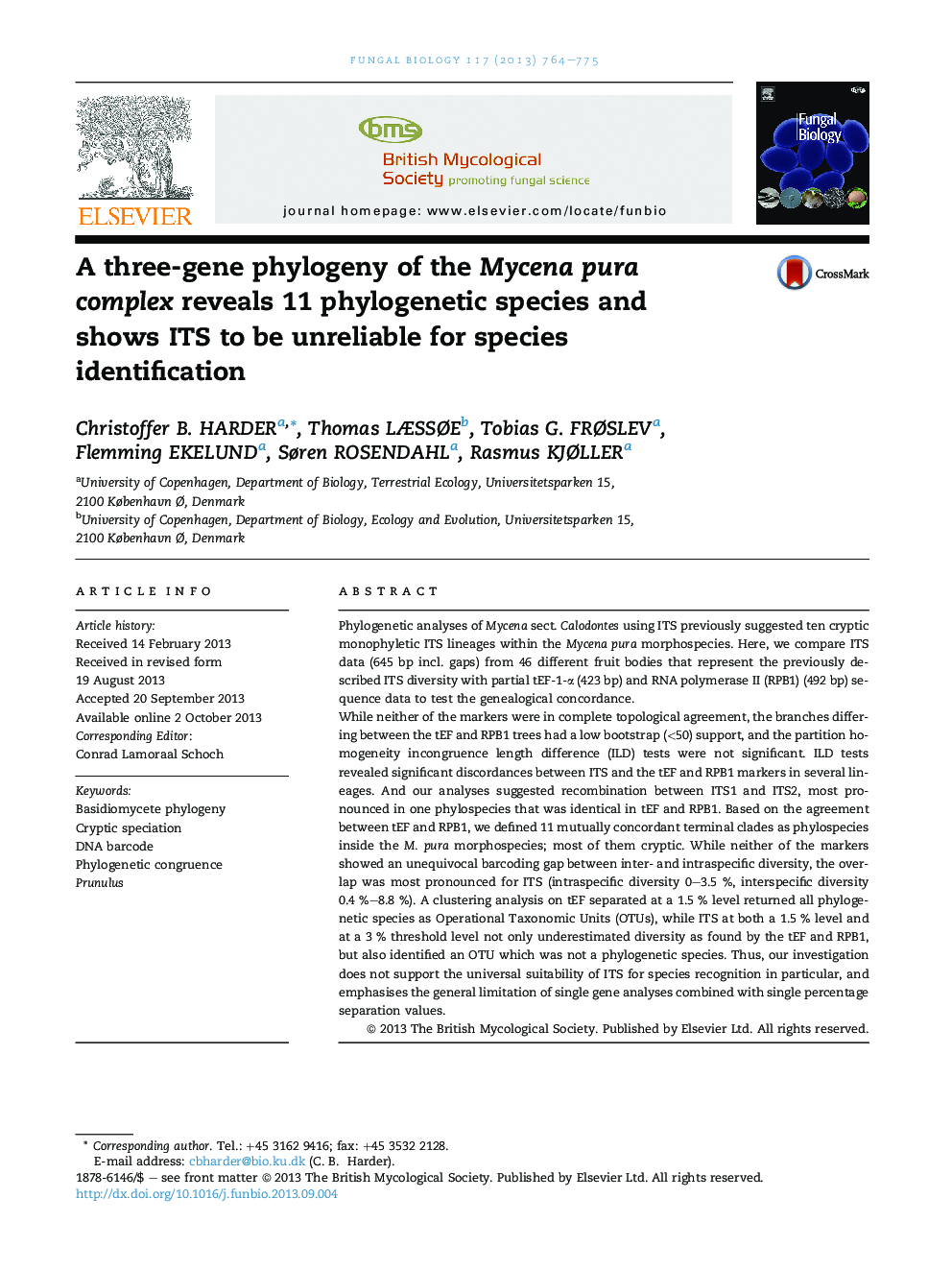| Article ID | Journal | Published Year | Pages | File Type |
|---|---|---|---|---|
| 4357130 | Fungal Biology | 2013 | 12 Pages |
Abstract
While neither of the markers were in complete topological agreement, the branches differing between the tEF and RPB1 trees had a low bootstrap (<50) support, and the partition homogeneity incongruence length difference (ILD) tests were not significant. ILD tests revealed significant discordances between ITS and the tEF and RPB1 markers in several lineages. And our analyses suggested recombination between ITS1 and ITS2, most pronounced in one phylospecies that was identical in tEF and RPB1. Based on the agreement between tEF and RPB1, we defined 11 mutually concordant terminal clades as phylospecies inside the M. pura morphospecies; most of them cryptic. While neither of the markers showed an unequivocal barcoding gap between inter- and intraspecific diversity, the overlap was most pronounced for ITS (intraspecific diversity 0-3.5 %, interspecific diversity 0.4 %-8.8 %). A clustering analysis on tEF separated at a 1.5 % level returned all phylogenetic species as Operational Taxonomic Units (OTUs), while ITS at both a 1.5 % level and at a 3 % threshold level not only underestimated diversity as found by the tEF and RPB1, but also identified an OTU which was not a phylogenetic species. Thus, our investigation does not support the universal suitability of ITS for species recognition in particular, and emphasises the general limitation of single gene analyses combined with single percentage separation values.
Keywords
Related Topics
Life Sciences
Agricultural and Biological Sciences
Agricultural and Biological Sciences (General)
Authors
Christoffer B. Harder, Thomas Læssøe, Tobias G. Frøslev, Flemming Ekelund, Søren Rosendahl, Rasmus Kjøller,
